
Beverages
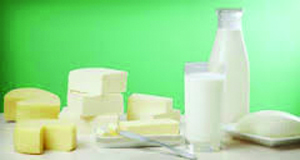
Dairy
MALTODEXTRIN POWDER
Used in the form of food additive, Maltodextrin is a light sweet polysaccharide which is basically produced from rice starch. Its CAS registry number is 9050-36-6. It is an intermediate product obtained by doing controlled hydrolysis of starch. It is generally hydrolyzed by Bacterial Alpha Amylase (an enzyme) and then additional conversion to have the desired DE ranging from 4 to 30. The product so obtained is then refined through clarification, carbon treatment and ion exchange and further spray dried to get moisture level of 3% to 5%.
Maltodextrin comes in the form of white powder. It is extremely bland in taste and has very little sweetness. As it has bland taste, it is inert on other food flavors and colors thus helping to retain the original flavor of food products. It exhibits very high viscosity when it is made in a solution form. However, it does not hold water in itself. It ensures dispersibility in cold water and so maintains clarity and eye appeal.
Maltodextrin comes in the form of white powder. It is extremely bland in taste and has very little sweetness. As it has bland taste, it is inert on other food flavors and colors thus helping to retain the original flavor of food products. It exhibits very high viscosity when it is made in a solution form. However, it does not hold water in itself. It ensures dispersibility in cold water and so maintains clarity and eye appeal.

It comes with a high energy rating of 4 cal/gm of solids and is highly suitable as a purified nutritive saccharide of choice for several food supplements. Maltodextrin has free flexibility, open structure and dispersibility in cold water making it an ideal additive to instant products. It also functions as an ideal crystal inhibitor, plasticizer and film former in food and beverages. It is ideal ingredient for ready to eat products. As it is non-hygroscopic in nature, it increases viscosity and prevents crystallization in frozen food products like ice cream.
Specifications :
| Parameters | Specifications |
|---|---|
| Physical Appearance | Off White Flowing Powder |
| Moisture % Max | 5% |
| DE | 4 to 30 |
| Sulphate Ash | 1.0% Max |
| Total Ash | 0.1 to 0.2 % Max |
| Acidity % | 1.2 to 1.5% |
Application:
Spray-drying Aid/Flavor Encapsulation:
Maltodextrin and dried glucose syrup are used in combination with emulsifying carbohydrates. They maintain emulsion stability and are excellent film formers, resulting in flavors that are conveyed in free flowing powders.
Bulking Agents:
It is used as bulking agents and serve as a carbohydrate component in many dry mix products, including puddings, soups, dry beverage mixes, frozen desserts, cookie mixes, cake, tea, coffee, artificially sweetened cocoas, etc.
Nutritional and Medical:
- Infant Food: Maltodextrin and dried glucose syrup are used in the area of infant formulas, which is just part of a broader area of nutritional fluids. In this case, Maltodextrin serves as the carbohydrate in non-milk or non-lactose based fluids (usually soy protein based).
- Enteral Products: The other area of nutritional fluids using Maltodextrin and dried glucose syrup is in enteral products, which is usually administered as part of a patient’s care in a hospital setting.
- Tabletting: It is used in producing improved excipients for tabletting and also as direct tablet excipients.
- Other Medical Applications: Useful as ingredients in coating for both pharmaceutical and confectionary tablets and as coatings for trace elements.
Fat Replacers:
For ice cream, salad dressings, etc.
Desserts
Dairy/Non Dairy Products
Salad Dressings
Confectionaries
Food Coatings
Oil Well Drilling Fluids
Other Applications
Snack foods, meat products, industrial applications, low alcohol beer, etc.
Desserts
Dairy/Non Dairy Products
Salad Dressings
Confectionaries
Food Coatings
Oil Well Drilling Fluids
Other Applications
Snack foods, meat products, industrial applications, low alcohol beer, etc.
Packing :
In 25 Kg HDPE bags with inner liner of LDPE & 25 kg Kraft Multiply Paper Bags.
Uses:


- Infant Foods
- Beverages
- Bakery Products
- Dairy
- Pharmaceuticals

Baverages

Bakery
HIGH MALTOSE SYRUP

High maltose syrup is a food additive used as ahigh Products sweetener and preservative. The majority sugar is maltose. It is less sweet than high fructose syrup, and contains little to no fructose. It is sweet enough to be useful as a sweetener in commercial food production. However, to be given the label “high,” the syrup must contain at least 50% maltose. Typically, it contains 40-50% maltose, though some have as high as 70%.
Specifications :
| Characteristic | Limit |
|---|---|
| Appearance | Colorless to high yellow colored syrup |
| Dextrose Equivalent / DE | 40.0 – 46.0 |
| Maltose % in DS Basis | 40.0 – 48.0 |
| Brix at 25 degree C | 78.0 – 84.0 |
| Ph of (1:1 Aqueous Solution) at 25 degree C | 4.0 – 6.0 |
| Heavy Metals (Lead PPM) | 1.0 Max |
Uses:


- Candy Production
- Functional Advantage Crystallization
- Texture Enhancer
- Stabilization
- Fermentation
- Humectants

Candy Production

humectants
LIQUID GLUCOSE
Liquid Glucose is obtained by partial hydrolysis of starch slurry by acid or enzyme. It is also known as Sweetose, Rice Syrup, or Glucose. Chemically, Liquid Glucose is a mixture of the entire spectrum of carbohydrate molecules derived by breaking the long chained molecules of polysaccharides contained in starch slurry. By adjusting the content of the ingredients, Liquid Glucose of various DE (Dextrose Equivalent) can be obtained for varied end uses.
Liquid Glucose (Sweetose) comes as a clear, colorless, viscous solution which makes it compatible with the physical properties desired in the end products. Chemically, Liquid Glucose shows up functional properties such as high fermentability, viscosity, humectancy – hygroscopicity, sweetness, colligative properties and its role in Maillard’s reaction.
Liquid Glucose (Sweetose) comes as a clear, colorless, viscous solution which makes it compatible with the physical properties desired in the end products. Chemically, Liquid Glucose shows up functional properties such as high fermentability, viscosity, humectancy – hygroscopicity, sweetness, colligative properties and its role in Maillard’s reaction.
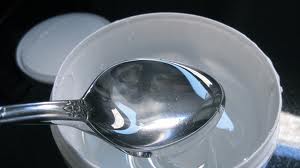
The properties of Liquid Glucose are directly related to the DE (Dextrose Equivalent) and so are its effects and flavor, freezing point depression and osmotic pressure. Other properties such as cohesiveness, bodying characteristics, foam stabilization and prevention of sugar crystallization are inversely proportional to the increasing DE.
The reducing action of glucose makes it incompatible with strong oxidizing agents, which has advantages of its own.
The reducing action of glucose makes it incompatible with strong oxidizing agents, which has advantages of its own.
Specifications :
| Parameters | Specifications |
|---|---|
| % DS (Dry Solids) | 85% (+-) 1%Min |
| PH | 4.8 – 5.2 |
| Free acidity (ml of NaoH 0.1 M) | 1 ml. max. |
| DE (Dextrose Equivalent) | 38 – 44 |
| %Ash | 0.25 Max |
| Starch | Absent |
| % DS for tanker packing | 80 – 83% |
Application:
- A food technologist will use it to control crystallization, body appearance, sweetness, osmotic pressure and as a preservative in hard-boiled candies, jams and jellies.
- A baker will ferment it with yeast for raising the product. A dairyman will add it to ice cream, to improve the texture and palatability of the ice cream and enhance flavors. It is usually the cheapest source of total solids. It has become common in the dairy industry to substitute all or a portion of the sucrose content with sweeteners derived from corn syrup. This sweetener is reported to contribute to a firmer and chewier body to the ice cream, it is an economical source of solids, and improves the shelf life of the finished product.
- A chemical engineer will find the use of liquid glucose a raw material for GLUCONIC ACID, KOJIC ACID and CITRIC ACID.
- A pharmacist will add Liquid Glucose in cough syrup and vitamin based tonics. Will also use it as a base of artificial honey. He also uses it as a granulating agent for tablet coating.
- A tobacco specialist will use liquid glucose in curing and imparting flavor in tobacco.
- A tanner will use Liquid Glucose to enhance weight and ensure a softer texture. He will also use it to precipitate chrome into the body of the leather due to its reducing action. He will also add it to shoe polish to prevent it from caking and to help it to give a better and quicker shine.
- The specialty of our Glucose Syrup is that it is Sulphur Free.
Uses:
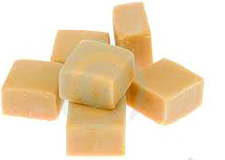
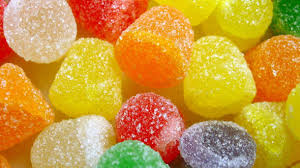
- Production Of Confectionery Products
- Soft and Hard Boiled Sweets
- Fondants and Creams
- Jellies Preserves
- Bakery Products
- Caramel and Toffee

Caramel and Toffee

Confectionery Products
INVERT SYRUP

Inverted or invert sugar syrup is a mixture ofinvert Products glucose and fructose; it is obtained by splitting sucrose into these two components. Compared with its precursor, sucrose, inverted sugar is sweeter and its products tend to remain more moist and are less prone to crystallisation. Inverted sugar is therefore valued by bakers, who refer to the syrup as trimoline or invert syrup.
Uses:

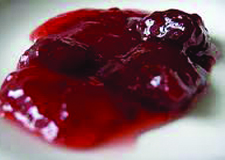
- Honey
- Jam
- Golden syrup
- Fondant
- Cigarettes
- Alcoholic Beverage
- Candy Sugar
- Wheat Thins
- Swedish Fish
- Jones Soda.

Honey

Jam
RICE GLUTEN
It is a fine granular powder that is characteristically free from rancidity and toxicity. It is an excellent source of highly digestible protein. Rice Gluten finds its application in the Poulltry & Cattle Feed Industry.
It is available with the following specifications:-
It is available with the following specifications:-
| Quality Parameter | Base Value |
|---|---|
| O&A | 50% + |
| Moisture | 10% |
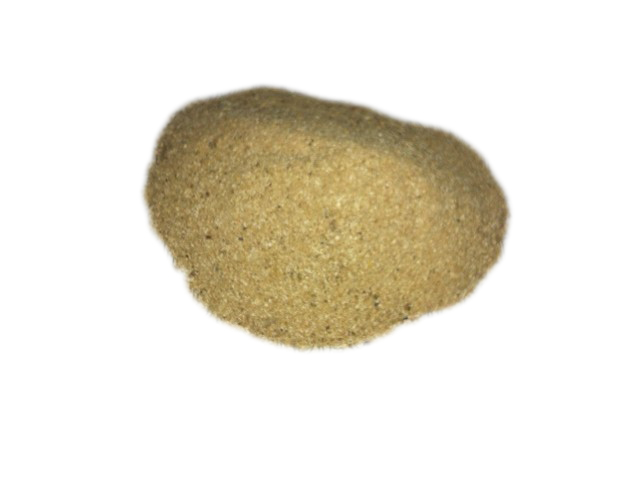
Uses:
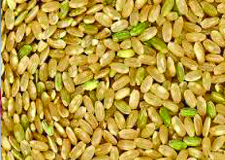
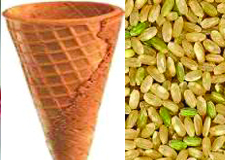
- Cattle Feed
- Poultry Feed

Product-1

Product-2
